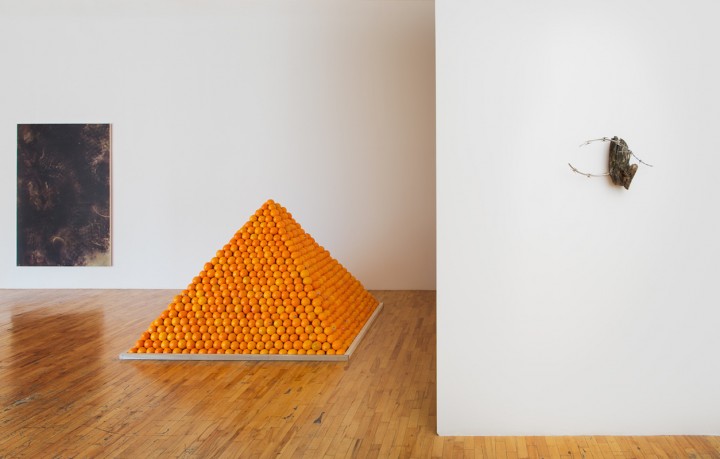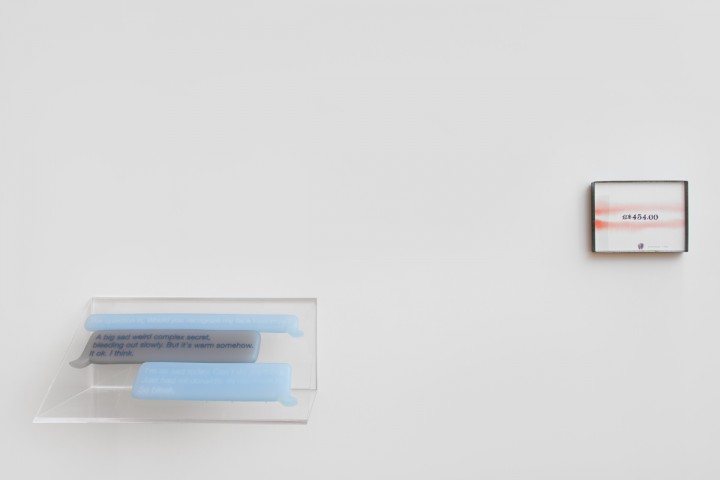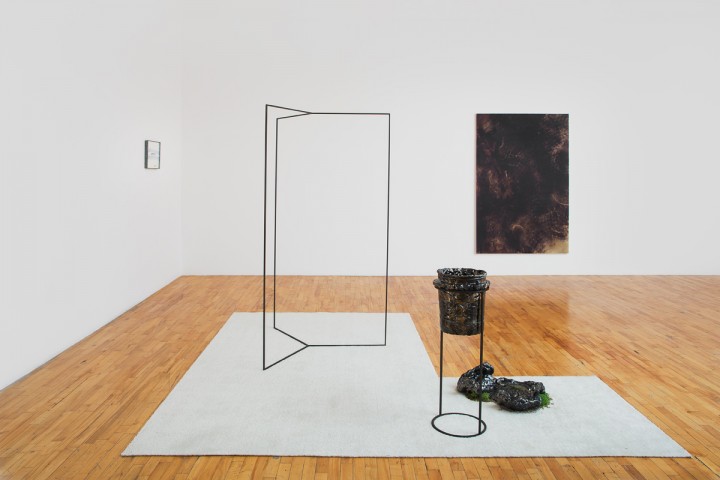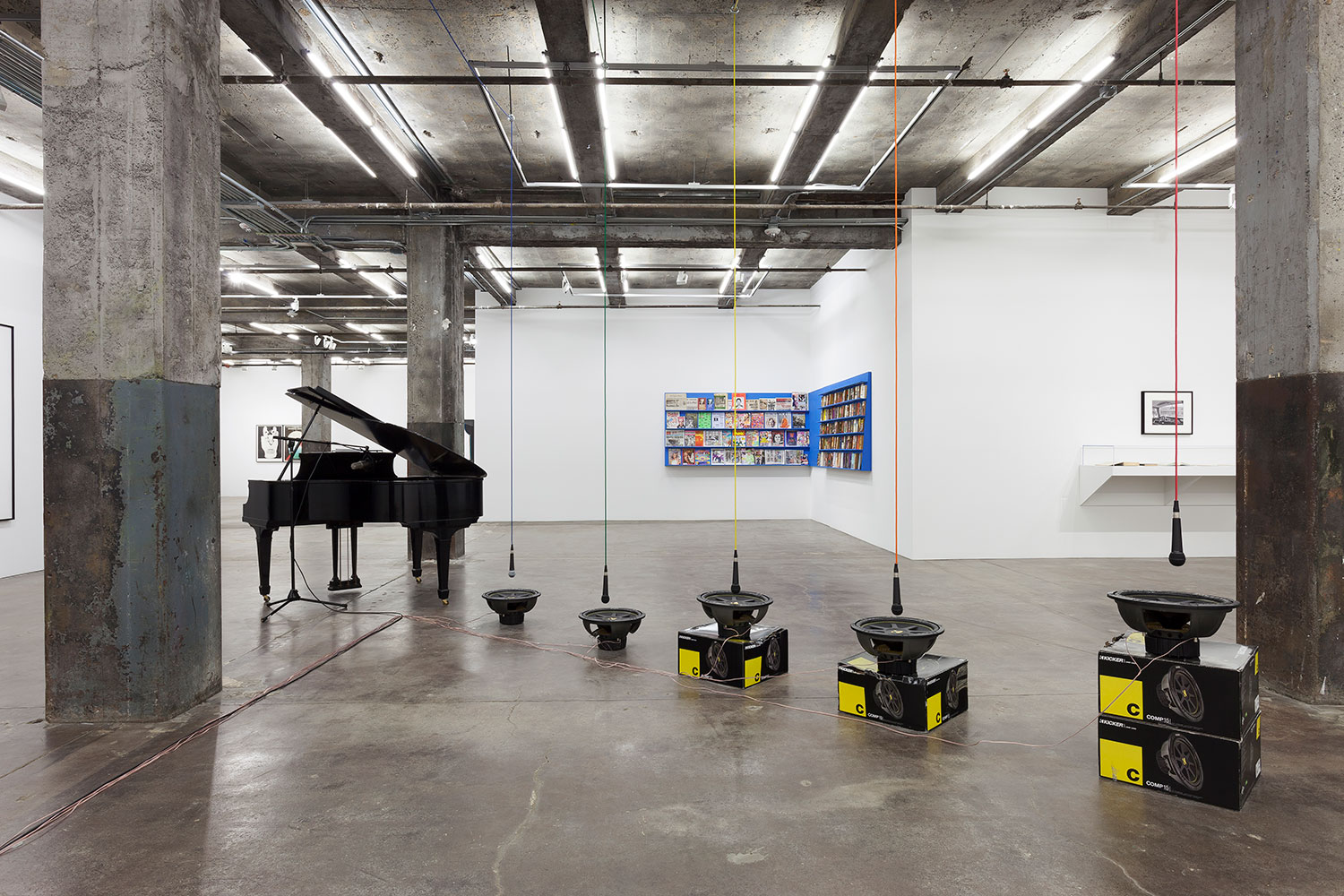A sculpture is the same sculpture still, regardless of how much its form changes, even when outside intervention or a work’s own inertia or decomposition alters its structure. The various constructions in “The Gentle Way (JUDO),” a group exhibition organized by participating artist Zak Kitnick, grow, expand or rot in multiple directions, both away from and toward each other.
Judo, Japanese for the gentle way, began in the 19th century as a martial art that relies on a series of light gestures that will gently turn one’s opponent’s strength against himself. Here, the various sculptures in the group hang in the balance, changing compositionally at a progressive state. Regardless of one’s point of entry into the exhibition, the first work to encounter is Roelof Louw’s Soul City (Pyramid of Oranges) (1967), a bright, free-standing structure that manages to simultaneously deplete and proliferate itself the longer it is on display — visitors are encouraged to help themselves to a piece of fruit, wearing down its peak over the length of its exhibition, while the sweet, biting scent of citrus intensifies, perfuming the space the longer Soul City sits in the sunshine. Four weeks into the show, the pyramid had almost entirely changed states, from a cone of orange globes to a heavy cloud of fragrance.
A story above the oranges, Kitnick’s Catfish (2015) is wedged between the pipes near the ceiling. A soft blue square of Instant Quick® Room Temperature, the instant foam packaging almost immediately turned into a solid lump within its fabric casing when it was activated upon being placed in position. Changing the density of Catfish used the particularity required in creating a site-specific work against itself, into one of inevitable self-destruction, since the once-supple form now has to be broken apart to be removed. Completing the triangle, Rochelle Goldberg’s A Basic Instinct (2015) offers a beige oasis from the neon fruit, industrial packaging, nearby barbed-wire works of Charles Harlan (Wood, Tree; both 2014) and floating text messages of self-doubt and grief from Anicka Yi Can You Teach The Agony To Sing? (2014). The off-white carpet is a backdrop for a constellation of minimalist steel lines and ominous shapes molded from crude oil, a fitting final stop to all of the stages in organic matter to have rolled out before it.




